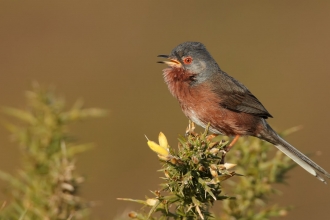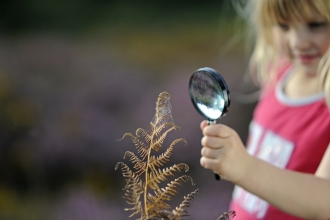
Neil Wyatt / White dead-nettle
Species of the Month: White dead-nettle
Take part in our wildlife survey
Have you seen our Species of the Month in Dorset? By reporting your sighting below, you can help us to build up a picture of the state of Dorset’s wildlife. We send the records of your sighting to DERC (Dorset Environmental Records Centre) who collate this information, providing the opportunity for local naturalists, conservation organisations and wildlife enthusiasts to work together to protect wildlife in Dorset. What’s more, when you complete our Species of the Month survey, your sighting will display on our interactive map below. This allows us to visualize the range of wonderful wildlife our supporters have spotted in their gardens, on their balconies or in their local green spaces throughout the year! So please help us help wildlife by filling in the form below. Thank you!

Neil Wyatt / White dead-nettle
Species of the Month: White dead-nettle
Scientific name: Lamium album
Layers
Identification
White dead-nettle is a common, flowering hardy perennial belonging to the mint family (Lamiacae). It is called ‘dead nettle’ because, unlike the true stinging nettles, it doesn’t have any stinging (urticating) hairs, so the ‘dead’ in its name is because the sting is ‘dead’ and cannot inflict injury.
White dead-nettle spreads by seed and rooting stems running horizontally underground (rhizomatous stolons), so can spread quickly to form large patches.
It can grow up to 40cm. The stems are hairy, hollow, flat and square shaped with ribs on the corners. The leaves are ovate to triangular with a slightly heart shaped base, toothed and stalked, and are arranged in pairs. The pairs of leaves are arranged alternately at right angles along the stem. The leaves are downy with an aromatic smell and often stay green over winter.
The flowers are white and 25 – 30 mm long and appear from March to December, with a peak in April and May. They are borne in whorls in the leaf axils and have hairy upper hoods and toothed lower lips with two lobes. Hidden within the hoods are four small buff stamens with black tipped anthers covered in golden pollen and the white stigma.
Diet
N/A.
Benefit to wildlife
White dead-dettle is a very good plant for wildlife. It provides a very important source of nectar, particularly for long tongued insects such as bees, at a time of year when there are fewer nectar producing plants in flower. The plant is sometimes called the bee nettle because bees, particularly bumblebees and mason bees, are attracted to it.
The flower secretes essential oils and a lovely fragrance to attract the insect, and yellow-green spots on the lower lip of the flower guide them into land on the lower lip which acts as a landing platform. Long tongued insects can reach down the long thin flower tube to reach the nectar, and in doing so brush against the stamens on the hood. Pollen is transferred to the backs of the visiting insect so they can deliver it to another flower to pollinate it.
The leaves are important food plants for several beetles, aphids, flies and about 15 species of moth and the caterpillars of the garden tiger, angle shades, burnished brass and large twin-spot carpet moth.
Did you know?
- Flora Britannica records tales of how boys used to chase girls with handfuls of white dead-nettle pretending they were real nettles.
- It has been called ‘Cinderella’s slippers’ because if you look inside the white flowers the black anthers on the stamens look like two black slippers.
- Dead-nettles are not poisonous to humans, and they don’t sting, but they can be confused with stinging nettles and some poisonous plants such as foxgloves, especially before the flowers appear. It is important to identify correctly if foraging for them. The leaves and young stem tips have a mild and pleasant taste and can be cooked as a vegetable and cooked like spinach or added to salads. The leaves contain good amounts of Vitamin A and C, iron, calcium, phosphorus and fibre while the seeds contain antioxidants. The flowers have a flavour of nectar and honey and can be used to make wine.
- White dead-nettle is also thought to have several medicinal uses with extracts been shown to have antiviral and antimicrobial effects.
Where can they be found?
White dead-nettle is widespread and common throughout lowland Britain but not in West Ireland and North Scotland.
How can I help?
If you have a garden, grow a patch of white dead-nettle! It is a good ground cover plant which is easy to control, and it is a good addition to wildflower meadows. White dead-nettle grows easily from seed, or you can buy young plants from online wildflower providers in early spring. They make pretty and long-lasting cut flowers for the house too.
Please don’t use herbicides or pesticides in your garden.
Report your sighting
Help us build a more accurate picture of Dorset's wildlife by completing this form. Your records will be sent to DERC on the understanding that the information provided by the recorder will be entered onto a computerised database and may be used for nature conservation, research, education or be available to the general public. Your sighting will also appear on our Species of the Month map. You can change your communications preference at any time by contacting us on 01202 692033.
When you have completed the form, click the Submit button. Please note that once submitted it can take up to an hour for your sighting to populate the map.


